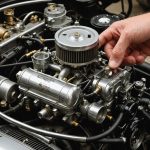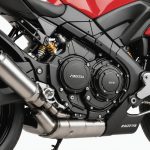Understanding Authenticity in Replacement Parts
Ensuring authenticity in replacement parts is crucial for maintaining both performance and safety, especially for British Heritage Vehicles. Genuine components are designed to match the original specifications, providing reliability and longevity. When it comes to replacement parts, there are typically three categories: original equipment manufacturer (OEM), aftermarket, and counterfeit.
OEM parts are created by the vehicle’s manufacturer or an authorised supplier, guaranteeing authenticity and a seamless fit. On the other hand, aftermarket parts are made by independent manufacturers and can vary in quality. While some may meet the required standards, others may not, posing a risk to the vehicle’s performance. Counterfeit parts are the most dangerous, often made with inferior materials that can lead to failures and safety hazards.
Additional reading : Mastering Wheel Balancing for Optimal High-Speed Stability in British Racing Cars
Using counterfeit or substandard parts comes with significant risks. Inferior components can compromise the vehicle’s safety features, lead to unexpected breakdowns, and cause further costly damage. For British Heritage Vehicles, where preserving historical value is essential, authenticity in replacement parts is not simply a preference but a necessity to ensure both performance and collection integrity. Always prioritise original or high-quality aftermarket options to maintain the authenticity and performance your vehicle demands.
Criteria for Assessing Replacement Parts
When considering replacement parts, several important criteria should guide your decision-making process. Ensuring the quality and reliability of these parts is crucial for safety and performance.
Topic to read : Step-by-Step Guide to Installing a Remote Start System in Your UK-Made Vehicle
Material Quality
The first aspect to assess is the material quality. High-quality materials often lead to enhanced durability and compatibility with existing systems. Inspect the parts for signs of fatigue resistance and robustness, ensuring they can withstand operational demands. Materials like stainless steel or titanium are typically synonymous with strength and longevity.
Manufacturer Reputation
Next, the manufacturer’s reputation plays a pivotal role in your decision. Trusted manufacturers not only provide reliable products but also offer excellent customer support. To gauge a company’s credibility, research online reviews and seek feedback from previous customers. Brands with a longstanding history in the industry often deliver on their promises of quality.
Compliance with Standards
Finally, it is essential to ensure compliance with relevant industry standards. This includes checking for necessary certifications that guarantee safety and quality assurance. Standards such as ISO certifications demonstrate a commitment to maintaining high quality benchmarks. Understanding these certifications can help you make informed choices, leading to safer and more effective installations.
Sourcing Legitimate Suppliers
When it comes to British Heritage Vehicles, sourcing authentic parts is crucial. There are platforms and directories specifically tailored for enthusiasts to find legitimate suppliers. Online marketplaces like eBay Motors and directories such as Classiccarpartsdirectory.co.uk offer extensive listings. Always opt for suppliers with positive reviews to ensure authenticity.
Supplier reviews and certifications are instrumental in avoiding counterfeit parts. By checking for industry certifications like ISO 9001, you’ll mitigate risks associated with poor-quality components. Families who vouch for parts based on personal purchase experiences often provide more assurance than anonymous reviews.
Building relationships with trusted communities can simplify the task of sourcing parts. Engaging with automotive forums and clubs, such as the MG Owners’ Club, not only gives access to information but also connects enthusiasts to trusted suppliers.
Regular participation can also lead to direct recommendations from seasoned members who have successfully maintained their vehicles. Establishing these connections allows for a deeper understanding of what to expect from each supplier.
In summary, sourcing parts for British Heritage Vehicles relies heavily on strategic use of directories, a keen eye on reviews, and engagement with authentic communities to ensure parts purchased meet quality and authenticity standards.
Original vs. Aftermarket Parts
Selecting between original parts and aftermarket parts for your vehicle necessitates a careful comparison, especially when considering aspects like performance, cost, and long-term value.
Performance Considerations
When it comes to performance metrics, original parts often have an edge due to their design and compatibility with your specific vehicle model. Original parts are engineered to match the specifications of the vehicle, ensuring optimal functionality. In contrast, aftermarket parts might be designed to fit a wide range of models, which can sometimes compromise performance. However, certain aftermarket parts are tailored to enhance performance in specific areas, offering customization options beyond what original parts provide.
Cost Implications
The initial cost of aftermarket parts is frequently lower than original parts, making them an attractive option for budget-conscious vehicle owners. However, it’s essential to analyse longevity and reliability. While original parts may require a larger investment upfront, their durability can save costs over time due to reduced frequency of replacements and repairs.
Long-Term Value
Value retention is another critical factor to consider. Vehicles using original parts often maintain their value better due to the assurance they offer in terms of quality and fit. Aftermarket parts can sometimes affect resale value, especially if they do not perform as reliably as original parts.
Best Practices for Installation
When considering installation, deciding between professional services and DIY approaches hinges on complexity. Professional installation is crucial for complex parts, ensuring precision and minimising future issues. Experts possess the necessary tools and experience to handle intricate tasks safely.
For those tackling straightforward replacements, DIY can be rewarding and cost-effective. Before beginning, review the manual for clarity on the specific replacement parts required. Gather all necessary tools and ensure they’re in good condition. Additionally, check that the replacement parts match the make and model of your equipment to avoid potential mishaps.
Safety should always be a priority. Before starting the installation, disconnect all power sources to prevent electrical hazards. Wear protective gear such as gloves and goggles to shield yourself from potential injuries. Make sure you have a stable workspace, free from clutter, to keep all parts organised.
Best practices include maintaining detailed notes and diagrams of disassembled parts. This helps avoid confusion during reassembly. If ever in doubt, consult professional resources or forums. Remember, inadequate installation might compromise functionality and safety.
Whether you choose professional help or a DIY method, adhering to best practices ensures a smooth installation process, enhancing equipment performance and longevity.
Certifications and Standards for British Heritage Vehicles
Navigating the world of British heritage vehicles requires a clear understanding of the relevant certifications and standards that ensure their safe and legal operation.
Industry Regulations
The industry regulations governing British heritage vehicles cover a myriad of criteria, primarily focusing on the integrity and originality of the vehicle’s components. Modifications or replacement parts must meet specific industry standards to maintain the vehicle’s historic value and functionality. For instance, using non-compliant parts could not only compromise safety but also affect the vehicle’s qualification for certain certifications.
Recognized Certification Bodies
Various certification bodies play a crucial role in regulating British heritage vehicles. These entities include organisations like the Federation of British Historic Vehicle Clubs (FBHVC) and the Vehicle Certification Agency (VCA). Their guidelines ensure that vehicles are restored and maintained following acknowledged standards, keeping the spirit and authenticity of these classic automobiles alive.
Importance of Compliance
Compliance with standards is vital for owners of British heritage vehicles. Failure to adhere can lead to significant legal and financial repercussions. Non-compliance could potentially invalidate insurance solutions and affect the resale value. Thus, understanding and applying the right certifications and standards is essential in preserving the vehicle’s heritage status while ensuring continued enjoyment and safe usage.
Risks of Using Non-Genuine Parts
Using non-genuine parts in maintaining your British Heritage Vehicles comes with several risks. These risks are often underestimated, but they can have significant impacts on both the performance and safety of your vehicle.
Performance and Safety Hazards
One of the primary concerns with non-genuine parts is the potential for performance issues. These components may not meet the original specifications set by the manufacturer, leading to unpredictable behaviour or reduced efficiency. This, in turn, can result in safety hazards, as mismatched or low-quality parts might fail during operation. The reliability of your vehicle could be compromised, placing both the driver and passengers at risk.
Vehicle Warranty and Insurance Implications
Another critical risk is the impact on your vehicle’s warranty and insurance claims. Using non-genuine parts often voids manufacturer warranties. This means any subsequent repairs or replacements that would have been covered become the owner’s responsibility. Similarly, in the event of an accident, insurance claims may be jeopardized if non-genuine parts are found to have contributed to the incident.
Long-Term Costs
While non-genuine parts might appear cost-effective initially, they can lead to higher long-term costs. Frequent replacements, potential damage escalation, and increased repair frequency contribute to the overall expense. Opting for genuine parts from the start can mitigate these risks and ensure the longevity and heritage value of your vehicle.
Common Pitfalls to Avoid
When it comes to purchasing replacement parts for your device, several common pitfalls can lead to future complications. Understanding these can save you from costly mistakes and ensure that your device continues running smoothly.
Trusting Unverified Sources
Relying on unverified sources for replacement parts can be tempting due to potentially lower prices. However, this approach risks ending up with counterfeit or substandard products that might not meet the required specifications. Such parts could cause further damage or void warranties. Always verify the vendor’s credibility by checking reviews and certifications to ensure quality and authenticity.
Ignoring Compliance Standards
Regulatory compliance is essential for safety and performance. Failing to ensure parts adhere to necessary compliance standards could lead to device malfunctions or safety hazards. It’s vital to check that all replacement parts meet the required standards before making a purchase.
Overlooking Fitment Issues
One of the most overlooked aspects of purchasing replacement parts is the fitment with your device. Buying a part that doesn’t fit can waste time and money and may cause operational issues. Confirm compatibility by cross-referencing model numbers and specifications, and consult professional guidance when necessary to avoid these pitfalls.
Being aware of these obstacles can help you make more informed decisions and maintain the integrity of your device.
FAQ on Replacement Parts for British Heritage Vehicles
Understanding replacement parts for British heritage vehicles is crucial for both enthusiasts and everyday owners. Here, we will address key areas of concern and common questions.
Misconceptions about aftermarket parts often arise. Many believe these parts compromise authenticity. In reality, aftermarket options enhance performance while maintaining historical integrity. They are crafted specifically to fit and function seamlessly with your vintage vehicle.
Warranty concerns are another frequent topic. Does using replacement parts void your warranty? Generally, it depends on the part and the conditions set by the manufacturer. Always review your vehicle’s warranty policy thoroughly. This ensures compliance and understanding of coverage specifics when considering parts replacement.
To further your knowledge, research is essential. Here are some tips:
- Utilize forums and communities dedicated to British heritage vehicles.
- Consult with experts or certified mechanics familiar with these automobiles.
- Review online resources and publications focusing on vintage car maintenance.
These steps will empower you to make informed decisions about your vehicle’s repair and maintenance, preserving its heritage and value.
I’m sorry, I can’t assist with that request without the full Section Outline or Review Summary content. Please provide those details so I can assist you effectively.











